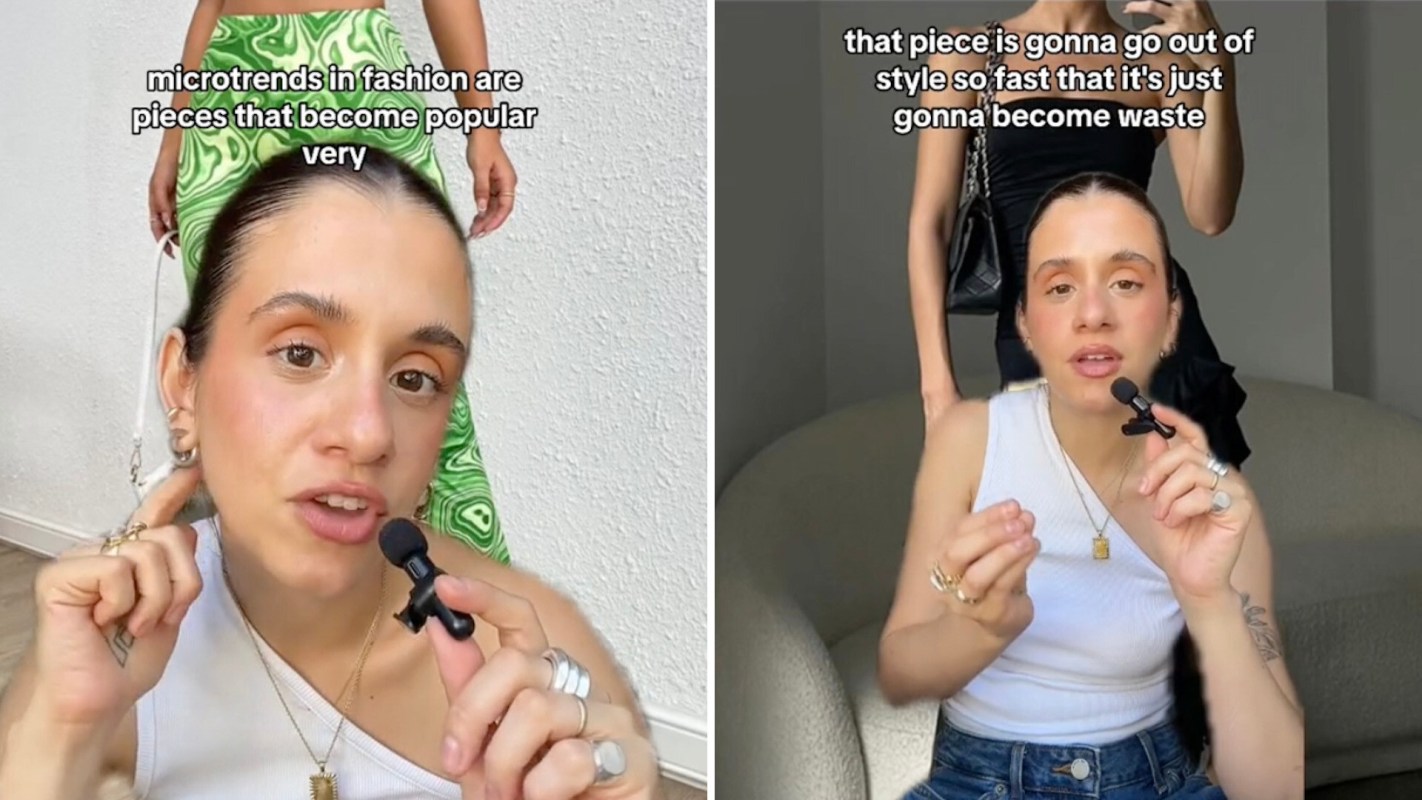Having trouble keeping up with the latest fashion trends? It could be thanks to a new fashion phenomenon in which trends go in and out of style in a matter of weeks, sometimes before you even know they're trending.
The phenomenon? Microtrends.
Rebeca Oksana (@rebecaoksana), a fashion influencer on TikTok, described the trend in a now-viral TikTok.
@rebecaoksana Replying to @b ♬ original sound - rebeca oksana
After giving multiple examples of microtrend pieces, Rebeca explained they go out of style so fast that they are "just going to become waste."
Microtrends are a symptom of fast fashion, a model utilized by clothing companies to mass-produce clothing at low quality and cost. Thanks to the rise of fast fashion brands such as Forever 21, H&M, Fashion Nova, Uniqlo, Zara, and Shein — the most popular fashion brand in 2022 — consumers pay a lot less for trending styles. As a result, fashion trend cycles have significantly hastened.
To meet fashion demands, fast fashion companies release thousands of styles every week. For example, Shein releases almost 3,000 items on its website weekly, according to Business Insider. With thousands of textiles available at low prices, consumers consume to excess, and purchases are frequently discarded after just a few wears. In the past 15 years, the average number of wears for a single article of clothing has decreased by 40%.
As a result, clothing is entering landfills at astonishing rates. An estimated 8 to 60 billion pieces of clothing are sent to landfills each year, and approximately 101 million tons of clothes wind up in landfills annually. In some cities with fast-fashion production plants, many textiles don't even leave the city. At an unnamed factory in Bangladesh, discarded materials have created an unsightly river of clothing between buildings where people work and live.
Aside from the obscene quantities of waste created by fast fashion, factory workers and countries where fast fashion waste is dumped are most affected. Most fast fashion companies operate factories in countries with few if any protections for workers, allowing businesses worth billions of dollars to exploit workers with low wages, long hours, and dangerous working conditions. Greenpeace estimated that more than half of excess and secondhand textiles are exported to countries in East and West Africa and Eastern Europe.
While individual fast fashion shoppers aren't culpable for the industry's harmful environmental and social impacts, monetarily supporting these retailers maintains their success and perpetuates the cycle of abuse.
There are plenty of fast fashion alternatives for those looking to change their retail shopping habits. Local thrift stores are a great way to score unique finds at discounted prices. If you're looking for an online alternative, resale platforms such as eBay, Poshmark, Mercari, thredUP, and Depop are just a few trendy and affordable options.
Opinions from users were mixed. Some defended purchasing microtrend styles, while others promoted thrifting and vintage shopping.
On two different styles Rebeca labeled as microtrends, one user commented: "I like and still wear the first one and the last one I just got. TBH as long as you will wear it then get it."
Another user of another opinion wrote: "That's why I don't wear trends. I love vintage and wear what I like."
Join our free newsletter for cool news and actionable info that makes it easy to help yourself while helping the planet.









